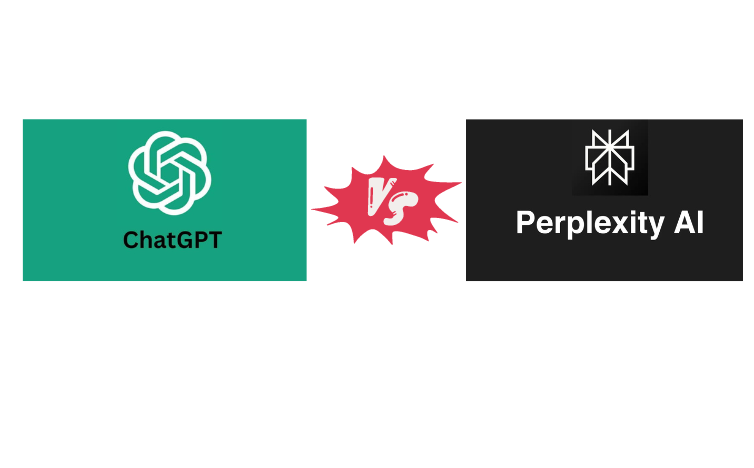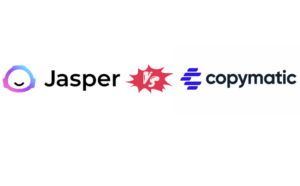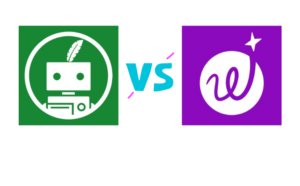Natural language processing (NLP) is an area that requires the use of the right tools or else your text could come off with a wrong tone. AI and machine learning have seen an emergence of two major tools—perplexity and ChatGPT—with each offering a unique proposition for both businesses and developers. The question, however, is how to make up your mind on which one is suitable for your particular needs.
Table of Contents
Understanding Perplexity and ChatGPT
When delving into the realm of Natural Language Processing tools, it’s essential to grasp the distinctions between Perplexity and ChatGPT.
Perplexity measures how well a language model predicts a sample of text by calculating the uncertainty in its predictions. It reflects how surprised a model is when encountering new data.
On the other hand, ChatGPT is an AI-powered conversational agent designed for generating human-like responses based on input received from users. It excels at understanding context and providing relevant information or engaging in conversation.
Comparison Of Perplexity vs. ChatGPT:
 Perplexity |
Our Pick
 ChatGPT |
|
|---|---|---|
| Creator | Developed by OpenAI | Developed by OpenAI |
| Main Focus | Focuses on measuring how well a language model predicts its output based on the input text | Designed for generating human-like responses in conversational settings |
| How it Works | Intergration with GPT-3.5 and GPT-4 | Uses GPT-3.5 architecture |
| Strengths | Great at providing versatile responses | Great at providing versatile responses |
| Data Sources | Perplexity retrieves data from text corpora used for language model training and evaluation | Gains knowledge from a diverse set of internet information |
| Core features | Live web searching. Citing sources. Copilot searching. Versatile content management | Multimodal functions. Integration with DALL-E. Tailored GPT models. Creation of code and content |
| User Feedback | Generally well-received, widely used | Users appreciate its diverse and engaging responses |
| Testing Outcomes | Consistent responses | Consistent responses |
| Impact in Industries | Enhances language model performance in industries like customer service, content generation, and information retrieval | Employed across sectors such as customer service, education, and entertainment for its conversational prowess and versatile language processing applications |
| Price | The service provides a basic version with standard features at no cost and offers a Pro version with advanced capabilities for $20 per month. | Free |
| Sign in | Requires any email address (No waitlist at present) | Requires any email address (No waitlist at present) |
| Languages | It is not limited to specific languages, evaluate language models in any language. | (95+) inc. English, Spanish, Arabic, Chinese, Russian, Japanese, Turkish, Portuguese, Hindi, Bengali, German, Indonesian, Marathi & Vietnamese |
What is Perplexity?
Perplexity serves as benchmark in language models. It refers to how well words can be predicted by a language model. Or rather, it measures the degree of faithfulness in relation to predications. In view of this, this metric quantifies how much the predictions provided by a model conform with the actual usage of the language. A lower value indicates better performance. There is more to perplexity as a performance metric because it represents an actual measure of proficiency in modeling – hence becoming quite useful when fine-tuning AI systems.
Defining Perplexity in NLP
Perplexity commonly referred to as PPL is a measure used for assessing machine learning models specifically those that involve speech recognition and natural language processing. More simply put, perplexity shows just how uncertain a model would be about predicting some sample data point given all its training so far.
If you don’t know what “perplexity” means, think of it like this: when there’s a lot of randomness or disorder (high entropy), perplexity is low, and vice versa.
The Implications of Perplexity
A high value for perplexity may indicate that there are certain errors in terms of word order understanding by such LM model with respect to some specific text fragment. And it has far-reaching consequences beyond just productivity when generating text —it could also reflect inefficient learning processes and unawareness regarding contextual information. Consequently, computer-generated responses will have lower accuracy rates compared to following real-world applications which might result in missed targets concerning human-like language.
Pros and Cons of Perplexity
ChatGPT Exploration
Another AI spectrum side is ChatGPT which has gained popularity in tech communities due to its capability of generating human-like text prompted by humans. This conversational ability in natural language processing by OpenAI has made it a main focus for the world owing to the pseudo-human quality of its responses.
Capabilities and Use Cases of ChatGPT
Compared to other AI language models, ChatGPT is a standard model with GPT-3 being the biggest so far with a record 175 billion parameters. It can be used for any task such as simple Q&A, creative writing, or code generation. The model’s scalability makes it suitable for diverse applications sectors. For example, customer service through chatbots powered by ChatGPT can save time for customers by providing approved human-generated replies instantly.
Learn More: ChatGpt vs Google Bard
Beyond Conversation Assistance Advantages
However, beyond chatbots, there are other advantages associated with ChatGPT with respect to its conversational interface. It may be useful for developers looking to generate content like blogs or emails. You have control over the output based on how you prompt the model; thus allowing customization while maintaining an appearance of human expression.
Pros and Cons of ChatGPT
Buying Guide
When choosing between ChatGPT and Perplexity for your NLP needs, there are several things you should put into consideration.
Think of what exactly you want to do: whether it is language modeling or producing human-like text replies. Establishing your aim will aid in making a choice.
Also consider the extent to which customization need can be accommodated. While ChatGPT is more adaptable when it comes to generating conversational texts, Perplexity is focused on measuring the performance of a language model.
Ease of use as well as integration with existing systems should also be thought about. If you need a quick implementation tool that is easy to navigate around, then ChatGPT’s user-friendly interface may be better suited for you.
Moreover, scalability should not be overlooked. Will there be need for processing huge chunks of data within relatively short periods? This might affect which tool suits your project best.
By carefully considering these elements, one gets an idea on which between Perplexity and ChatGPT meets their NLP requirements best.
Learn More: ChatGPT vs Gemini
Conclusion
Perplexity as well as ChatGPT are two tools among others in the AI toolkits, which are targeted at different functions. Aim of this article is to help you make a choice based on this understanding. Think about it this way: what’s important is not “which tool is better,” but “which tool fits best for my task”. Whether it be the fine grain perplexity for model finetuning or ChatGPT’s conversational elegence during customer engagements, the right choices made today will build more intelligent applications for tomorrow.
FAQs
How is Perplexity Measured?
So, how do I measure perplexity? – Train a language model and evaluate it on a test dataset. Tools like the Natural Language Toolkit (NLTK) in Python have made this process accessible. But remember that accurate perplexity scores can be gotten only through data split (training vs. test vs. validation).
Can Perplexity Be Used with ChatGPT?
It is not often that perplexity and ChatGPT are mixed due to their different natures. However, you could use perplexity to assess your training data that you might subsequently fine-tune on for a GPT-based system. In turn, this technique may lead to more optimized language generation.
What Matters When Choosing Between These Tools?
Besides being project-specific, this choice depends on the nature of the work being done. For model research and development, perplexity is an essential metric. Nevertheless, if the goal is to build an AI conversational agent or content generator, then ChatGPT should be preferred.
Which Is More Popular: ChatGPT or Perplexity for AI chatbots?
There are various user bases for both ChatGPT and Perplexity; however, advanced conversational abilities make the former more known than the latter.




